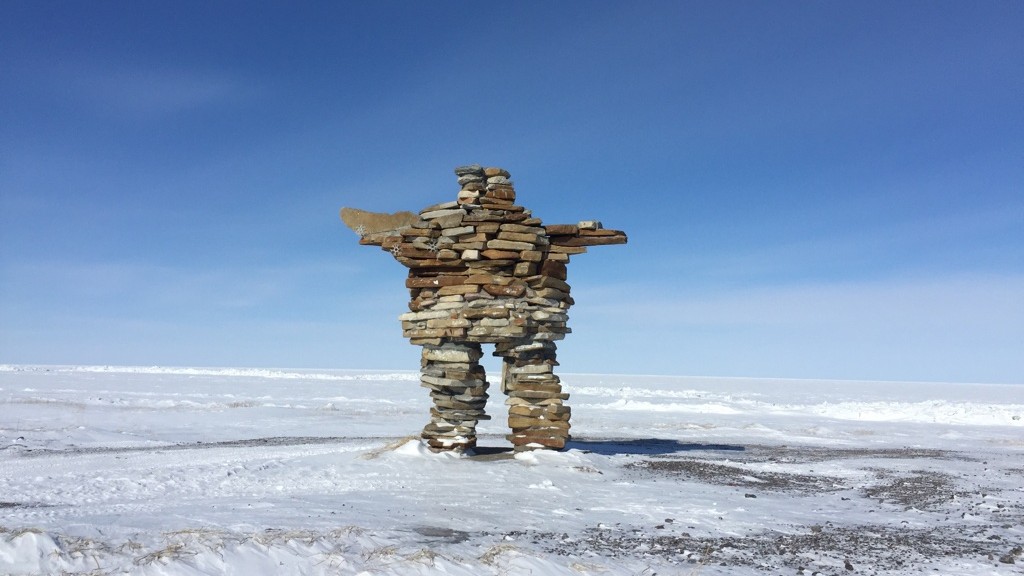Twin science projects seek to understand impacts of Arctic climate change

Two major international science projects involving hundreds of scientists from around the world are underway in the Arctic seeking to understand the dramatic changes happening in “the epicenter of climate change” and their effect on the rest of the planet.
The first mega-project involves an international team of researchers, who set off Friday on the biggest and most complex expedition ever attempted in the central Arctic, a yearlong journey they hope will sharpen the scientific models that underpin human understanding of climate change.
The Multidisciplinary drifting Observatory for the Study of Arctic Climate, or MOSAiC for short, will see 600 scientists from 19 countries, including Germany, the United States, Britain, France, Russia, China and Canada, work together in one of the most inhospitable regions of the planet.
“The Arctic is the epicentre of global climate change,” expedition leader Markus Rex of Germany’s Alfred Wegener Institute for Polar and Ocean Research said ahead of the launch, reports The Associated Press. “At the same time, the Arctic is the region of the planet where we understand the climate system least.”

Packed full of scientific equipment, the German icebreaker RV Polarstern left the port of Tromso in northern Norway on Friday accompanied by a Russian vessel, the Akademik Fedorov, to search for a suitably large floe on which to anchor.
As the days get shorter and the sea freezes around the vessel, crews will race to set up research stations on the ice. Then the Polarstern and the network of camps are set to slowly drift toward the North Pole, with rotating teams of dozens of scientists spending two months conducting research on the ice.
While scientists involved in the MOSAIC project drift trapped in sea ice, a second group of scientists will conduct complementary research from a network of field stations around the Arctic, including Canada, said Warwick Vincent, a polar scientist and Canada Research Chair at Université Laval in Quebec City.

This second Arctic science project dubbed T-MOSAiC: Terrestrial Multidisciplinary distributed Observatories for the Study of Arctic Connections will try to understand what are the consequences of the rapidly diminishing Arctic sea ice cover for the surrounding lands and communities, said Vincent, who is a member and former director of the Centre for Northern Studies (CEN).
The Canadian research centre is the co-lead with the University of Lisbon, Portugal, of T-MOSAiC.
“Both of those projects are very exciting,” Vincent said. “They are really ways of learning about how the Arctic is changing and the ways in which we can predict those changes in the future.”

Like MOSAiC, T-MOSAiC involves scientists from more than a dozen countries working under the auspices of the International Arctic Science Committee (IASC), reflecting the urgent need for us to all work together among nations to confront the global crisis of rapid climate change, Vincent said.
“Increasingly we realize that those lands around the Arctic are intimately connected to what is happening in the ocean,” Vincent said. “And of course for the people who live there, their culture, their way of lives have really have been closely linked to the food web of the Arctic Ocean to the sea ice of the Arctic Ocean for all sorts of reasons, including just the transport along the coast.”
(Click to listen to the full interview with Warwick Vincent)
As a biologist who’s been working on Canada’s northernmost tip on Ward Hunt Island since 1998 Vincent has witnessed many of these changes first hand.
“The changes have just been extraordinary in front of our eyes,” Vincent said. “Ice shelves, for example, very thick ice, some of the thickest ice floating on the Arctic Ocean has collapsed in front of us especially over the last decade-and-a-half or so.”
Ice that is up 100 metres thick has suddenly caved and disappeared, Vincent said.
“When I started in 1990s, some of the lakes were covered up to four metres or more of ice,” he said. “Over the last five years or so, we have seen a collapse of that ice and now even open water conditions during the summer months. Unprecedented conditions at least for millennia and maybe even longer.”
Scientists are increasingly seeing extreme events, Vincent said.
“This is of great concern for us,” he said. “What used to be considered very unusual circumstances are now becoming the norm at this far northern region of Canada and the circumpolar North.”
Related stories from around the North:
Canada: Glacier-fed rivers in Arctic Canada sucking carbon dioxide out of the air: study, CBC News
Finland: Climate change spurs growth of exotic fruit in Finland, Yle News
Greenland: Greenland ice cores reveal historic climate clues, says study, Eye on the Arctic
Norway: Climate change is about to divide Norway’s largest Arctic island, The Independent Barents Observer
Russia: Retreating ice reveals new land in Arctic Russia, The Independent Barents Observer
United States: Heat stress that caused Alaska salmon deaths a sign of things to come, scientist warns, CBC News



